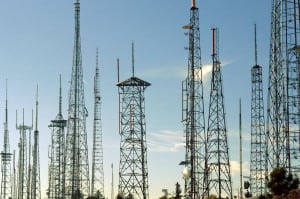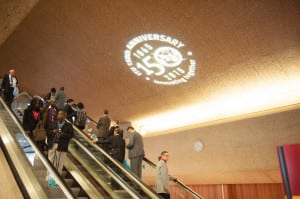VVA Disputes Veracity of GSMA-Commissioned C-band Studies
[Via Satellite 11-17-2015] Analysts from VVA are disputing studies on the benefits of allocating C-band for use by the mobile industry that the GSM Association (GSMA) commissioned ahead of the 2015 World Radiocommunications Conference. The reports by Plum Consulting and Frontier Economics, posit that there would be substantial economic benefits in opening up certain amounts of C-band, used today by the satellite industry, for players in the International Mobile Telecommunications (IMT) industry.
WRC-15 started Nov. 2 and continues through Nov. 27. C-band spectrum, which stretches from 3400 MHz to 4200 MHZ, is one of many topics being discussed and evaluated with potential for revisions that could shape the future of the telecommunications industry. According to VVA, the GSMA studies, which could have a direct influence on policy makers, provide an incomplete assessment of the impact reallocating C-band, particularly on incumbents already using the band.
“Both the studies are over estimating benefits because they are only taking into account a limited range of costs and are not quantifying the disappearance of benefits for those that today are using C-band,” Monica Pesce, managing director of VVA, told Via Satellite from WRC-15. “In some cases it is that they are overestimating the benefits they will gain by getting access to C-band, but the most important part is they are not taking into account a set of costs or a disappearance of benefits that, if included in the study, would of course have negative impacts on the total value.”
Frontier Economics has performed studies on the reallocation of C-band for three regions: the Asia Pacific, Africa, and the Middle East. Plum very recently released a study on the potential benefits of IMT use of C-band in London, U.K., and Shenzen, China.
“Not many alternatives have been considered, such as the case for alternative bands,” added Marco Bolchi, principal consultant at VVA. “There is just a focus on C-band. C-band is very effective for mobile operators because it is the largest chunk of spectrum available, but it is not the only one.”
Bolchi said the Plum study starts from the assumption that C-band is easily sharable — something vehemently refuted by the satellite industry — and that the quantification approach is related to the savings for mobile operators in terms of money saved on the deployment of additional small cells. Regarding the Frontier Economics studies, he said the impact of rain fade is understated on users who, without C-band, would be forced to use alternatives such as Ka- or Ku-band, which do not ensure the same level of service.
In an email to Via Satellite, Frontier Economics said it understands VVA has concerns with its studies regarding the scope and methodology, but disagrees with the research group’s claims.
“On scope, we understand that VVA considers that we have not quantified the gains from alternate means of providing additional mobile capacity or of reallocating spectrum bands other than the C-band. We believe, and other studies have shown, that the alternate means will not be sufficient to meet the future demand for spectrum. Consequently, additional spectrum will be necessary. The objective of the report was therefore to quantify the costs and benefits of reallocating C-band. The economic assessment of reallocating other bands was thus outside the scope of our study,” Goran Serdarevic, a manager in Frontier’s Economic’s telecoms practice, told Via Satellite.
On the impact to existing C-band users, Serdarevic said Frontier Economics also disagrees, because its estimates assume that only half of the available C-band will be reallocated to mobile use. Critical applications, the research firm assumes, will move to the upper half of the band to coexist with mobile, while non-critical applications would move to other bands.
“Also, on methodology, VVA has raised concerns about our use of 2.6 GHz auction values instead of 3.5 GHz auction values to estimate economic benefits and our calculation of country-specific factors. Currently, 3.5 GHz spectrum is not widely used for mobile; 2.6 GHz spectrum, on the other hand, is also high-frequency spectrum that is currently used to provide mobile capacity in the same way that we would expect C-band to be used in the future, making it a relevant proxy,” Serdarevic added.
The satellite industry has said in the past that IMT claims on the need for additional spectrum are largely overstated. A report from LS Telcom found that, in many places, spectrum already available to the mobile industry goes unused. Pesce said the positive impacts of reallocating C-band found in the disputed studies concentrates heavily on the benefits for the mobile industry. Meanwhile the negative impact could be so strong it could actually be detrimental to the economy at large, she said. VVA stands by its claims, saying that the veracity of the studies’ conclusions should be assessed with greater scrutiny.
“To declare that reallocating C-band is a cost-effective solution, you need to take all the costs into account. This might be the most cost-effective solution for mobile operators because they transfer costs to other stakeholders. They move costs from their industry to another industry, … but it is not for the economic system as a whole. This is the key weakness of both studies,” said Pesce.
A central issue in both GSMA-commissioned studies is the requisite sharing of C-band, which the satellite industry is adamantly against on the grounds that the interference from mobile sites easily drowns out satellite signals coming from space. Pesce said VVA does not find sharing to be an option or an acceptable compromise, and that there is a danger of finding out ex post facto that sharing causes so much interference that critical services are inaccessible. Furthermore, she said this has the most profound impact on less developed economies, where torrential downpours are commonplace.
“In these areas, the banking system for example, ATMs or the stock exchanges — we are talking about Africa, areas in Asia, areas in Central America — all these areas rely on C-band because it is the only source of connectivity and other needed pieces of information in heavy rains. Without that, those services would not work with the required service-level agreements,” explained Pesce.
C-band is used extensively for satellite television broadcasting — a mainstay for satellite operators in terms of revenue — but is also used for vital emergency response and disaster management. Pesce said this is less of an issue in Europe and North America, and places like Russia and part of China may go unaffected, but for several of the world’s emerging economies, satellite-enabled C-band services are an irreplaceable part of their economies.
“In these areas, especially rural regions, since there is no economic sense in creating a network of fiber or other physical ways of creating connections, C-band is really the only source. In some areas this is the only source to use mobiles in rural areas. Without C-band in places where heavy rain doesn’t happen once in a while but for months, there would be no source of connectivity,” said Pesce.

